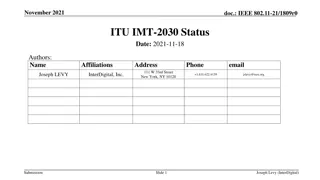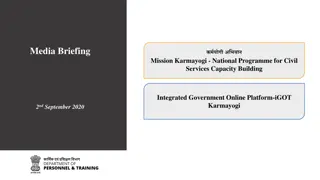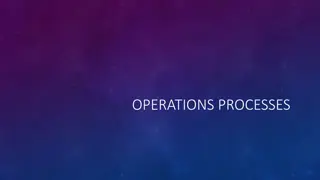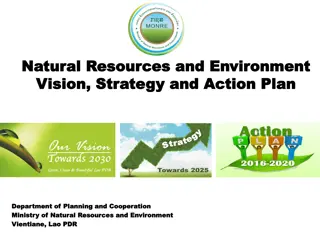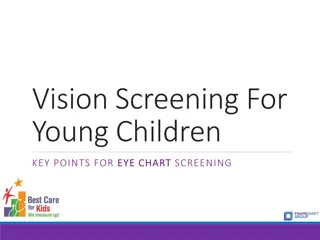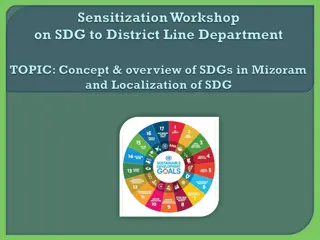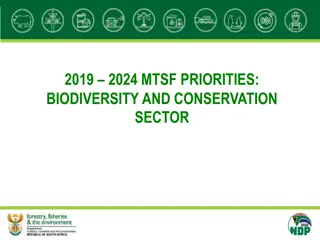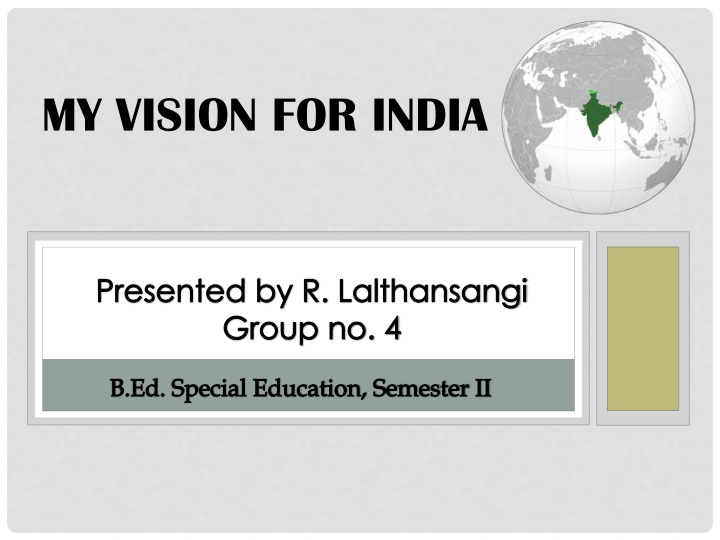
Transforming India: Vision for Development by 2030
India's vision for development includes achieving high human development status, focusing on education, health, agriculture, defense, and economy. Targeting issues like low female literacy and underprivileged education, the country aims to elevate its ranking on the Human Development Index by 2030.
Download Presentation

Please find below an Image/Link to download the presentation.
The content on the website is provided AS IS for your information and personal use only. It may not be sold, licensed, or shared on other websites without obtaining consent from the author. If you encounter any issues during the download, it is possible that the publisher has removed the file from their server.
You are allowed to download the files provided on this website for personal or commercial use, subject to the condition that they are used lawfully. All files are the property of their respective owners.
The content on the website is provided AS IS for your information and personal use only. It may not be sold, licensed, or shared on other websites without obtaining consent from the author.
E N D
Presentation Transcript
MY VISION FOR INDIA Presented by R. Lalthansangi Group no. 4 B.Ed. Special Education, Semester II
GROUP - 4 MEMBERS Miriam Lalsangzeli R. Lalthansangi Remsangpuii Salome Lalduhpuii Vanlalmuanawmi Vanneihchawngi Victory Vanlalruati Z. Lalrawntluangi Zoramchhani R. Lalhruaitluanga R. Lalnunthara T. Lalmuansanga VLMS Dawngliana Wycliff Lalchhandama Malsawmzuala Hnamte
OUR VISION You must be the change you wish to see in the world. Mahatma Gandhi We have seen our country resurrect from the chains of British bondage after a long struggle of freedom, won in 1947. India 2020: A vision for the New Millennium (By Dr. A.P.J. Abdul Kalam and Y.S. Rajan), Dr. Kalam described the plan as Transforming the nation into a developed country.. by 2020. India has evolved and stood among the prideful line of nations heading towards new heights of development and well being. However, after 75 years of Independence, why is India, being the largest democratic country, still retaining the tag of a developing country for so long? Our main vision India to become a developed country by 2030.
WHERE INDIA STANDS According to the Human Development Index, Rank 1-66: Very high human development Rank 67-119: High human development Rank 120-156: Medium human development Rank 157-189: Low human development India 131st among 189 countries in the 2020 Human Development Index, according to United Nations Development Programme (UNDP). Human Development Index is the measure of a nation's health, education, and standards of living. India, Bhutan (129), Bangladesh (133), Nepal (142), and Pakistan (154) were ranked among countries with medium human development, the 2020 Human Development Report said.
CATEGORIES TO DEVELOP ON EDUCATION HEALTH AGRICULTURE DEFENCE ECONOMY The development made in these categories will all diverge into the same goal, that is, the development of the country as a whole.
EDUCATION 1. EDUCATION FOR WOMEN Low female literacy rate in India Gender disparity 2. EDUCATION FOR THE UNDERPRIVILEGED Minorities Disabled
LOW FEMALE LITERACY RATE Female literacy rate in India is around 60%, 22 percentage points below world average. As per the 2011 census, over 80% of the country s young female population (aged 7 to 29) is literate. Literacy rate, adult female (% of females aged 15 and above)
GENDER DISPARITY o Overall literacy rate has risen multi-fold since Independence, from around 18% in the 1950s to 74% in the last census, but the averages hides vast disparities. Apart from the low female literacy, there is also a wide gender disparity in India s performance on literacy with a difference of around 20 percentage points between male and female literacy rates. This disparity has been persistent throughout the years, although it has been falling over time with the current gap being the lowest since Independence.
EFFECTS OF LACK OF EDUCATION Prevents women s participation in the workforce, thus hindering the country s development. Significant impact on the development of future generations as they usually have a more direct role to play in their child s education than their father. An addition of a year of schooling to a mother s education has a significantly higher impact on the next generation than an addition to the father s schooling by the same number of years. Further, better birth outcomes like higher birth weight and lower child mortality are observed among educated mothers.
SCHEMES TO PROMOTE EDUCATION FOR WOMEN Beti Bachao, Beti Padhao Working Women Hostels The Support to Training and Employment Programme (STEP) Mahila- E- Haat SABLA Swadhar Greh One-Stop Centre Scheme Nari Shakti Puraskar
MINORITIES The Right to Education act guarantees free and quality education to all children aged between 6 and 14. Incentives like Mid-Day Meal, scholarships and even reservations in private schools are designed to encourage maximum enrolment of students from underprivileged backgrounds. As per a survey revealing, India's organized sector has only 34 million people which forms a very small strata of the total population, i.e. about 1,380 million. According to the report of the National Sample Survey Office (NSSO), 32 million Indian children of age up to 13 years have never attended any school, the majority of them belonging to the socially disadvantaged class. Free education, along with a mid-day meal is not enough to make education attractive.
DISABLED COMMUNITY As things stand, 45% of India s disabled population is illiterate, according to Census 2011, compared to 26% of all Indians. Of persons with disability who are educated, 59% complete Class X, compared to 67% of the general population. Initiatives and measures. Eg: SCERT
HEALTH Expenditure and Budget India improved its ranking on a global healthcare access and quality (HAQ) index from 153 in 1990 to 145 in 2016, but now it has slipped to the 150th rank in healthcare, according to the World Economic Forum. India ranked 10th out of 11 Asia Pacific countries in a newly-launched health index. Generally, countries that spend more on health per capita and had better health systems scored higher on the HAQ index. According to Health and Family Welfare, India spends 1.6% of the gross domestic product (GDP) on health. This expenditure is relatively low as compared to other countries such as China (3.2%), USA (8.5%) and Germany (9.4%). The Government of India aims to increase healthcare spending to 3% of the GDP by 2022. We wish that the national and state budget allocations increase by at least 25% in the next year.
Eradication of TB and Malaria India accounts for about a quarter of the global TB burden. It is estimated that about 40% of the Indian population is infected with TB bacteria. The government is calling for the elimination of TB by 2025. According to World Malaria Report (WMR), 2019, India represents 3% of the global malaria burden. India contributes about 70% of malaria in the South East Asian Region of WHO. Malaria imposes great socio-economic burden on humanity, and with six other diseases (diarrhea, HIV/AIDS, tuberculosis, measles, hepatitis B, and pneumonia), accounts for 85% of global infectious disease burden. India has a vision of a malaria free country by 2027 and elimination by 2030, according to the World Health Assembly.
Covid - 19 There are two covid-19 vaccines approved in India Covishield vaccine and Covaxin, launched on 16th January, 2021. The country is a vaccine powerhouse: it makes 60% of the world's vaccines and is home to half a dozen major manufacturers. India has supplied close to 60 million Covid-19 vaccine doses to other countries. The vaccines have been supplied to close to 70 countries, according to the Hindustan Times.
AGRICULTURE Development from Independence till now In India, agriculture was the main source of national income and occupation at the time of Independence. Around 72 % of total working population were engaged in agriculture. Even today, more than 60 % of the workforce is engaged in agriculture. India is primarily an agricultural country as two- thirds of its population depends on agriculture.
Agriculture was the only sector to have clocked a positive growth at constant prices in 2020-2021. The share of agriculture in gross domestic product (GDP) has reached almost 20 per cent for the first time in the last 17 years, making it the sole bright spot in GDP performance during 2020-21, according to the Economic Survey 2020- 2021. The share of agriculture in GDP increased to 19.9 per cent in 2020-21 from 17.8 per cent in 2019-20.
CONTRIBUTION TO THE WORLD India s rank in agriculture production 2020 is 74th out of 113 prime countries in terms of food. Indian grocery and food market placed 6th rank in the world. It contributes 70% of the sales. 1st in milk and wheat production 2nd in dry fruits 3rd in fish production 4th in egg production 5th in poultry production Also contributes 60% to overall India s agriculture GDP only by animal farming and horticulture. With better promotion and increase in production, we believe agriculture can play a huge role in contributing to the economy growth.
DEFENSE Budget and expenditure India jumps to third rank in global military expenditure. The defence budget has been increased to Rs Rs 4.78 lakh crore for 2021-22 . The government is planning on buying a number of military equipment and machines like light combat helicopters, ATAGS, Tejas Mark 1A, submarines and AK 203s. Our vision is that India reforms to producing these equipment and selling them instead of buying them to improve the economy of the country.
ECONOMY India is the world's sixth-largest economy by nominal GDP and the third-largest by purchasing power parity (PPP). India had overtaken the UK in 2019 to become the fifth largest economy in the world but has been relegated to 6th spot in 2020.
VISION FOR 2030 India is the fastest-growing economy with 8.80%, followed by China (8.24%). The National Intelligence Council stated that India s economy will outrun China by 2030. According to one of UK's leading economics consultancies, Centre for Economics and Business Research, India will become the world s third- largest economy by 2030, overtaking the UK in 2025, Germany in 2027 and Japan in 2030.
VISION FOR 2030 Science and technology is also fundamentally changing the way Indians live and work. By 2025, the digital economy is expected to account for approximately 18-23% of the total GDP. Leading in terms of entrepreneurship. To increase its rate of employment growth. India is planning to achieve 40% of its energy from non-fossil sources by 2030.
TO CONCLUDE The critical challenges India faces today can only be overcome through communication and cooperative initiatives between the people of India and the current political administration. If these issues go unaddressed, India might encounter severe consequences that can result in potential and permanent damage to India s chance of becoming a developed nation. The government is trying to drag up the fallen economic status of India and we must assist them by impacting the society. There is still time to gift ourselves a developed nation.
Jawaharlal Nehru once said, India is rich but Indians are poor . Let us refute this saying and take every small step in channelizing India towards development. Our group envisions and strongly believes that we can work together and strive towards making India a developed country by 2030.









